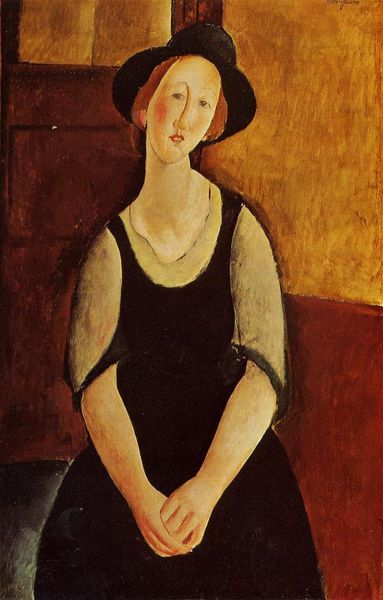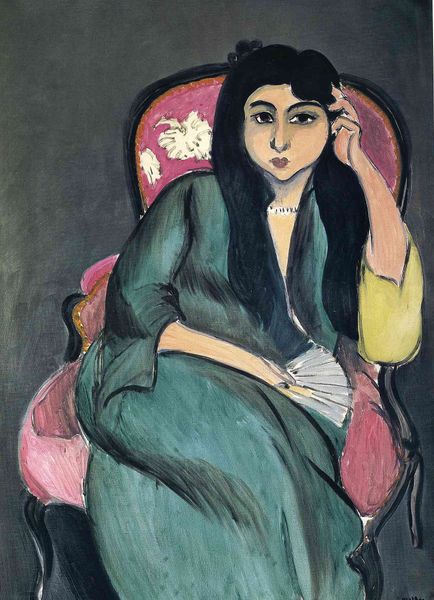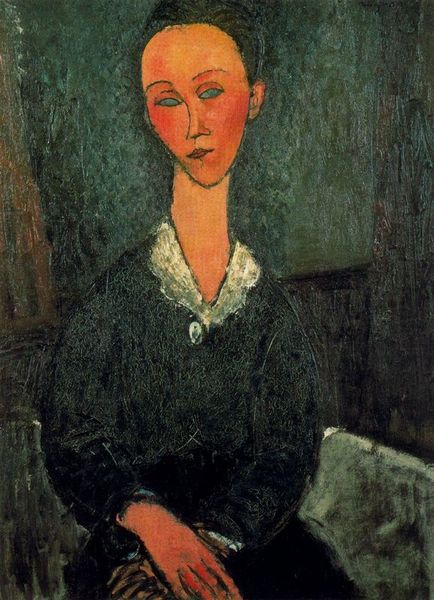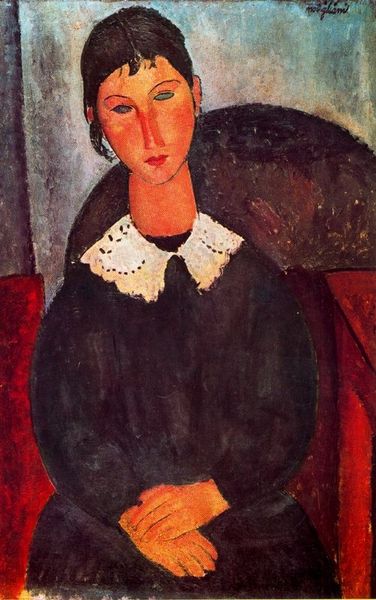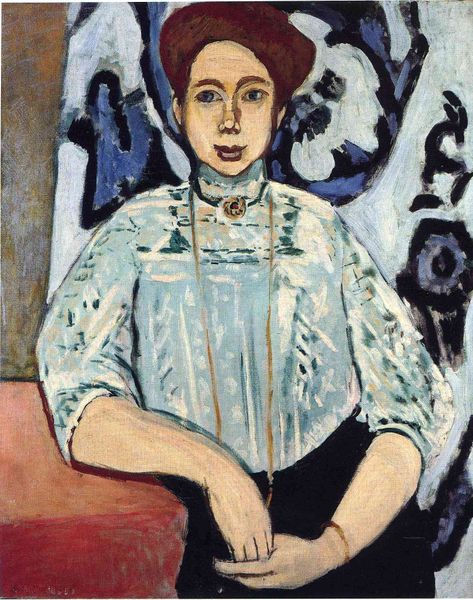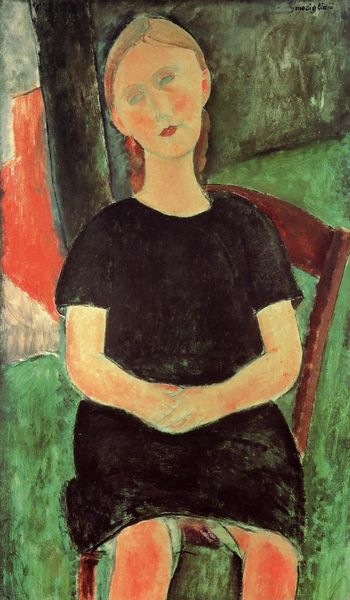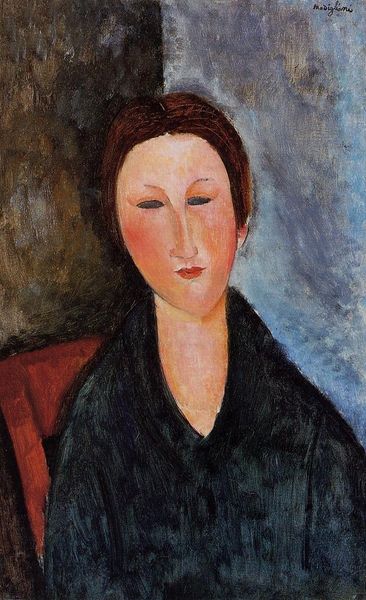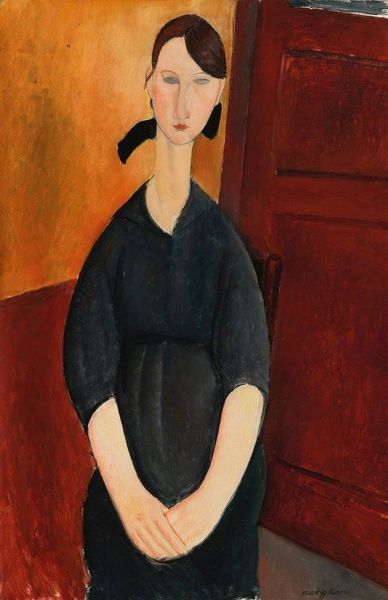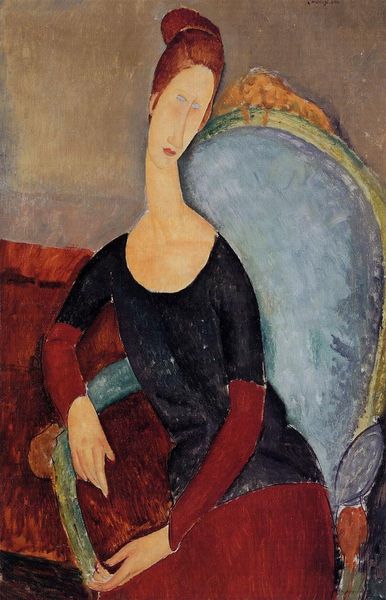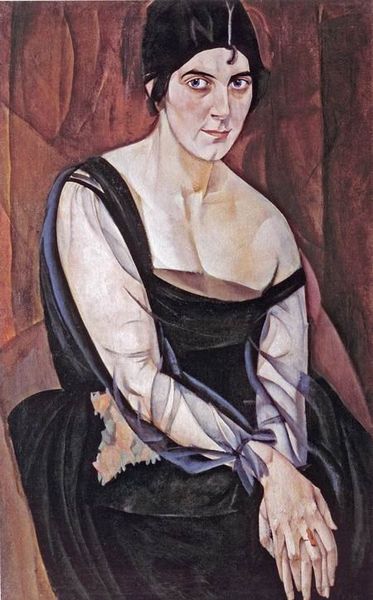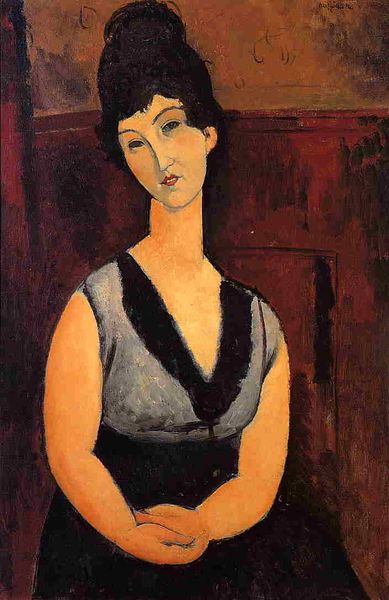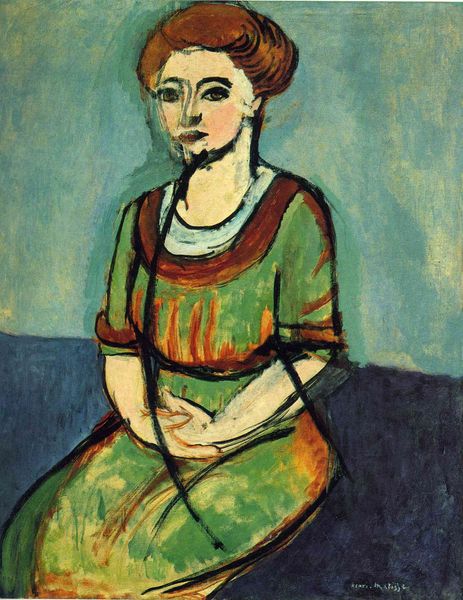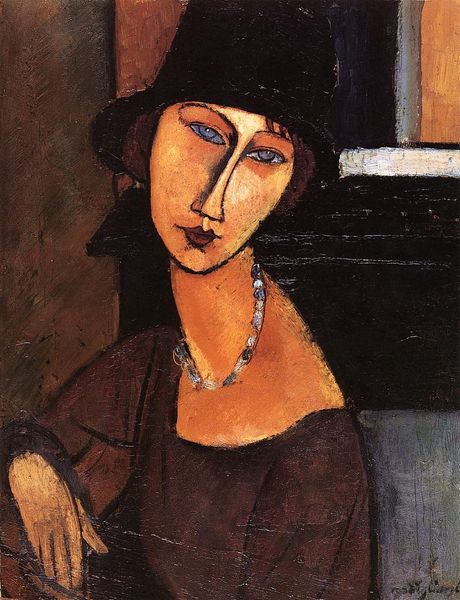
Copyright: Public domain US
Curator: What strikes you first about Matisse's "The Ostrich Feather Hat," painted in 1918? For me, there's this disarming directness, a boldness of color and line. It’s quintessential Fauvism, wouldn’t you say? Editor: The first thing that comes to mind is the mask. I see a face, certainly, but the flatness, the simplified form, the lack of depth – it gives her face the quality of a ceremonial mask, almost. I wonder what she’s concealing. Curator: Interesting, "concealing" suggests a darkness perhaps not so obvious. I am lost in the way he builds the picture. Look at the contrast between the checked fabric of her dress, the ornate wallpaper, and the simplicity of her features. To me, there is a sense of depth—not merely surface decoration. Editor: Well, those bold, decorative elements absolutely vie for attention, creating a surface tension. But even the hat—ostrich feathers, symbols of wealth and status—seem deflated here, almost droopy. Perhaps this reflects the social anxiety of the time? It was painted during World War I, after all. Curator: I think you're right—Matisse wasn't merely painting a portrait. He’s capturing something more complex. Those droopy feathers indeed might say that excess has a price, or at the very least, appears melancholic. He often played with that tension: between beauty and melancholy. It reminds me a bit of my own days of flamboyant living when my joy was only ever surface deep. Editor: The tight, high collar also has something of a repressive feeling, combined with that black choker that further divides her head from her body. Almost like she’s a porcelain doll on display, an object. The whole painting presents a controlled, constructed identity for our assessment. The woman here isn’t so much represented but presented for judgement. Curator: Yes, perhaps it's about more than simply a representation. And there you have it: from bright, bold colors to anxieties of the self. Matisse always seems to invite you deeper. Editor: It’s fascinating how an image, at first glance straightforward, can reveal so much about societal anxieties, cultural memory, and even perhaps the sitter's inner life. This painting serves as more than a reflection of a face in a hat. It’s a portal, if we’re willing to really see it.
Comments
No comments
Be the first to comment and join the conversation on the ultimate creative platform.
